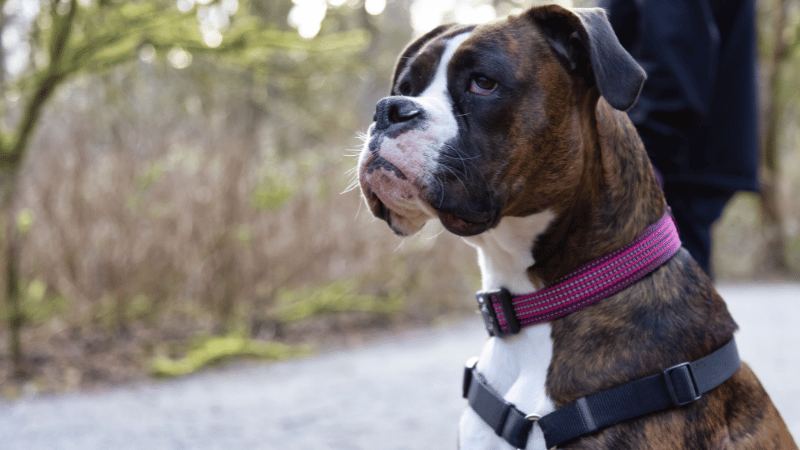How Tight Should a Dog Collar Be?
Dog collars are an essential accessory for any dog owner. Not only do they provide a way to identify your dog, but they also serve a purpose in training, control, and safety. However, it's important to make sure that the collar is properly fitted to ensure the safety and comfort of your furry friend. In this article, we'll discuss how tight a dog collar should be, factors to consider when fitting a collar, risks of an improperly fitted collar, and tips for fitting a dog collar properly.
Understanding the Purpose of a Dog Collar
Before we discuss how tight a dog collar should be, it's important to understand the different purposes of a dog collar. The main purposes of a dog collar include:
Identification: A collar with an ID tag is an easy way to identify your dog and ensure that it can be returned to you if they get lost.
Control: A collar can be used to control your dog on a leash, allowing you to keep them safe and under control in public places.
Training: A collar can be used for training purposes, such as teaching your dog to walk on a leash or to stop pulling.
Safety: A collar can also serve as a safety measure, such as a reflective collar that makes your dog visible in low light conditions.
Factors to Consider When Fitting a Dog Collar
When fitting a dog collar, there are several factors to consider to ensure that it is properly fitted. These factors include:
Dog Breed: Different dog breeds have different neck sizes and shapes. It's important to choose a collar that fits the breed of your dog.
Dog Size: The size of your dog will also impact the size of the collar. A larger dog will need a larger collar than a smaller dog.
Dog Age: A young puppy will need a smaller collar than an adult dog. It's important to check the collar size regularly as your puppy grows to ensure that it is still properly fitted.
Collar Type: Different types of collars have different fit requirements. For example, a slip collar should fit more loosely than a flat collar.
How Tight Should a Dog Collar Be?
A dog collar should fit comfortably without being too tight or too loose. When fitting a collar, you should be able to fit two fingers between the collar and your dog's neck. If the collar is too tight, it can cause injury, choking, or even death. If the collar is too loose, it can slip off and your dog can run away or get into dangerous situations.

Risks of an Improperly Fitted Collar
An improperly fitted collar can seriously harm your dog's health and safety. If the collar is too tight, it can cause injury to your dog's neck, throat, or trachea. It can also cause your dog to choke or have difficulty breathing. In severe cases, it can even lead to death. If the collar is too loose, your dog can slip out of it and get lost or injured.
Tips for Fitting a Dog Collar Properly
To ensure that your dog's collar is properly fitted, follow these tips:
Measure Your Dog's Neck: Use a tape measure to measure the circumference of your dog's neck. Add an inch or two to the measurement to ensure that the collar is not too tight.
Check the Fit Regularly: Check the fit of your dog's collar regularly to make sure that it is not too loose or too tight. As your dog grows, you may need to adjust the collar size.
Adjust the Collar as Needed: If the collar is too tight or too loose, adjust it to ensure that it fits properly. You should be able to fit two fingers between the collar and your dog's neck.
Use the Right Collar: Choose the right type of collar for your dog's needs. For example, a flat collar is best for everyday wear, while a harness may be better for dogs that pull on their leash.
Consider the Material: Some materials, such as leather or nylon, are more durable and comfortable than others. Choose a collar made of high-quality materials to ensure that it lasts and is comfortable for your dog to wear.
Use a Breakaway Collar: If you have a cat or a dog that likes to explore, consider using a breakaway collar. These collars are designed to release if the collar gets caught on something, reducing the risk of injury.
Watch for Signs of Discomfort: Watch for signs that your dog is uncomfortable wearing the collar, such as scratching or rubbing at their neck. If your dog shows signs of discomfort, adjust the collar or consider using a different type of collar.
Related Article : How Tight Should a Dog Collar Be
Conclusion
In conclusion, it's essential to make sure that your dog's collar is properly fitted to ensure their safety and comfort. A collar that is too tight can cause injury or even death, while a collar that is too loose can slip off and put your dog at risk. By following the tips outlined in this article, you can ensure that your dog's collar is properly fitted and that they are safe and comfortable while wearing it. Remember to check the fit regularly and adjust the collar as needed to ensure that it continues to fit properly as your dog grows and changes. With a properly done collar, you can enjoy all of the benefits of having a happy, healthy, and safe dog.

